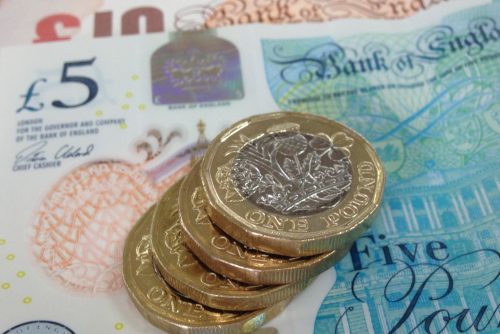Strong economic recovery lowers forecast for business borrowing in 2021 by £7bn

UK firms are now expected to borrow a net £19bn this year – £7bn less than forecast in February – as the economy rebounds quicker than anticipated and the demand for loans to support cashflow reduces.
According to the latest EY ITEM Club Interim Bank Lending Forecast, UK GDP is now expected to grow 6.8% in 2021 – up from the previous forecast of 5% – and consumer credit is forecast to bounce back from the near 10% fall in 2020 and grow 10% by the end of this year as consumer spending increases post-lockdown.
Banks lent businesses £35.5bn in net terms (including COVID-19-related government-backed loans) last year – an 8% year-on-year increase – primarily to help firms through the pandemic. With the economy re-opening, growth in lending volumes is set to halve by the end of this year (to 4%) and slow further in 2022 to 1.6% as businesses increasingly focus on repairing their balance sheets. These forecast figures are modelled on the Government’s roadmap for easing pandemic-related restrictions.
Net lending via credit cards and personal loans turned negative in 2020, falling by almost 10% – the first decline since 2012 – as many consumers reduced their spending and made more repayments than normal during the 2020 lockdowns. But demand for consumer credit is expected to turn positive and return to almost pre-pandemic levels by the end of this year (rising by 10.5%), fuelled by an expected rebound in consumer spending as COVID-19 restrictions are removed. Conversely, while mortgage lending activity remained relatively robust through the pandemic – growing 3% last year, with the same level of growth forecast this year – it is expected to slow down in 2022 as the end of the stamp duty holiday, higher unemployment and stretched affordability weigh on demand.
Anna Anthony, UK financial services managing partner at EY, said: “Given how difficult the last 15 months have been for millions of families and businesses up and down the country, it’s encouraging that the economic recovery will be quicker and stronger than initially forecast, boosting the fortunes of businesses and sparking a rise in consumer spending. That’s not to say though that there won’t continue to be challenges ahead.
“For the banking sector, the lockdowns have had a unique and divergent impact on lending volumes. While many businesses borrowed more than normal just to survive and millions of consumers repaid record levels of personal debt and borrowed less, these patterns will likely be relatively short-lived. The housing market remained resilient through the disruption, but a slowdown in activity is expected later this year and into 2022.
“The banks will continue to support businesses and households through the pandemic and beyond, but modest lending growth on some fronts combined with the ongoing very low interest rate environment means the pressures on profitability will remain front of mind for the sector for the foreseeable future.”
Lending growth slows as firms rely less on emergency funds and look to repair balance sheets
Business lending increased rapidly last year due to the COVID-19 lockdowns, with many UK firms relying on government-backed lending schemes to stay afloat. Firms borrowed just over £35bn in net terms in 2020 – four times more than the year before – with borrowing by small and medium-sized enterprises (SMEs) particularly notable (reaching levels 33-times higher than in 2019, according to the Bank of England).
This year, banks are expected to lend the corporate sector a further £19.2bn in net terms – still high historically but down from the £26bn initially forecast by the EY ITEM Club in February, with companies’ need to borrow to support cashflow reducing alongside a quicker-than-expected economic recovery. Bank to business lending is expected to slow further next year with firms borrowing a net £7.8bn (1.6% y/y growth) as their focus shifts to repairing their balance sheets.
On the business investment front, following a contraction of 10.2% in 2020, the EY ITEM Club expects business investment to gain momentum over the course of 2021, rising 7.1% as companies grow more confident in the recovery. Savings totalling c£150bn accumulated by businesses over the past year (from March 2020 to March 2021) could help fund future investment in many cases. Business investment growth of 10.5% is then expected in 2022 as confidence benefits from a more settled business environment.
Consumer credit expected to receive a boost from economy’s reopening
The EY ITEM Club Interim Bank Lending Forecast expects consumer credit to grow 10.5% in 2021 and 9.1% in 2022 as consumer spending rebounds post-lockdown.
Net lending via credit cards and personal loans turned negative in 2020 and remained in negative territory in the first three months of this year. Annual growth in February fell to -10%, the lowest level since records began in 1993, due to both low demand for credit and high levels of repayments, before recovering only marginally to -8.6% in March. From March 2020 to March 2021, the British public repaid a total of £23bn of credit card debt and personal loans – the biggest repayment over an equivalent period on record.
As restrictions are eased, a return to more normal spending patterns should cause consumer credit lending to turn positive, further supported by very low interest rates on personal loans and credit cards. However, there are risks to the forecast: savings accumulated during the pandemic may fund some spending that would normally have been financed using credit, which could dampen the expected rebound in consumer lending.
Mortgage lending set to hold up this year but slow next due to new headwinds
Last year, housing market activity was far stronger than would be expected given the impact of COVID-19. The stock of mortgage lending grew by 3%, largely due to a release of pent-up demand following the lifting of lockdowns, the stamp duty holiday, record low mortgage rates and fiscal support bolstering household incomes. With these factors still in play for much of this year, growth should continue at a similar pace (3% growth) in 2021, but is forecast to fall to 2.4% in 2022 as the end of the stamp duty holiday, higher unemployment and stretched affordability affect demand.
Over the next few months, the extension of the stamp duty holiday and the new mortgage guarantee scheme, introduced in March’s Budget to encourage banks to offer high loan-to-value mortgages, is expected to support transactions and mortgage demand. However, some macro developments such as the end of the furlough scheme in September – which may lead to an increase in unemployment – could weigh heavily on demand towards the end of this year and into next. Continued high property prices are also likely to be a drag on housing and mortgage demand, with the average UK house price now 7.8-times the average annual salary (£29,500).
Small rise in loan-losses expected this year
Write-off rates on consumer and business lending fell last year due to government support offered during the pandemic. While banks are likely to face a rise in losses in the coming months as some consumers and businesses struggle to meet the required loan repayments, it is expected the increase will be relatively small this year and far lower than experienced after the financial crisis in 2008.
Write-off rates on consumer credit are forecast to rise from 1.2% in 2020 to 1.5% this year and 1.8% in 2022. In comparison, 2019’s rate was 1.46%. Mortgage write-off rates are expected to rise to 0.02% this year and 0.03% in 2022, three times higher than in 2019 (0.01%). Business loan losses are forecast to rise from 0.23% in 2021 to 0.36% next year, compared to 0.33% in 2019. To give further context, after the 2008 financial crisis, loan losses peaked at 0.08% for mortgages in 2009, 5.0% for consumer credit in 2010 and 1.6% for business loans in 2011.









